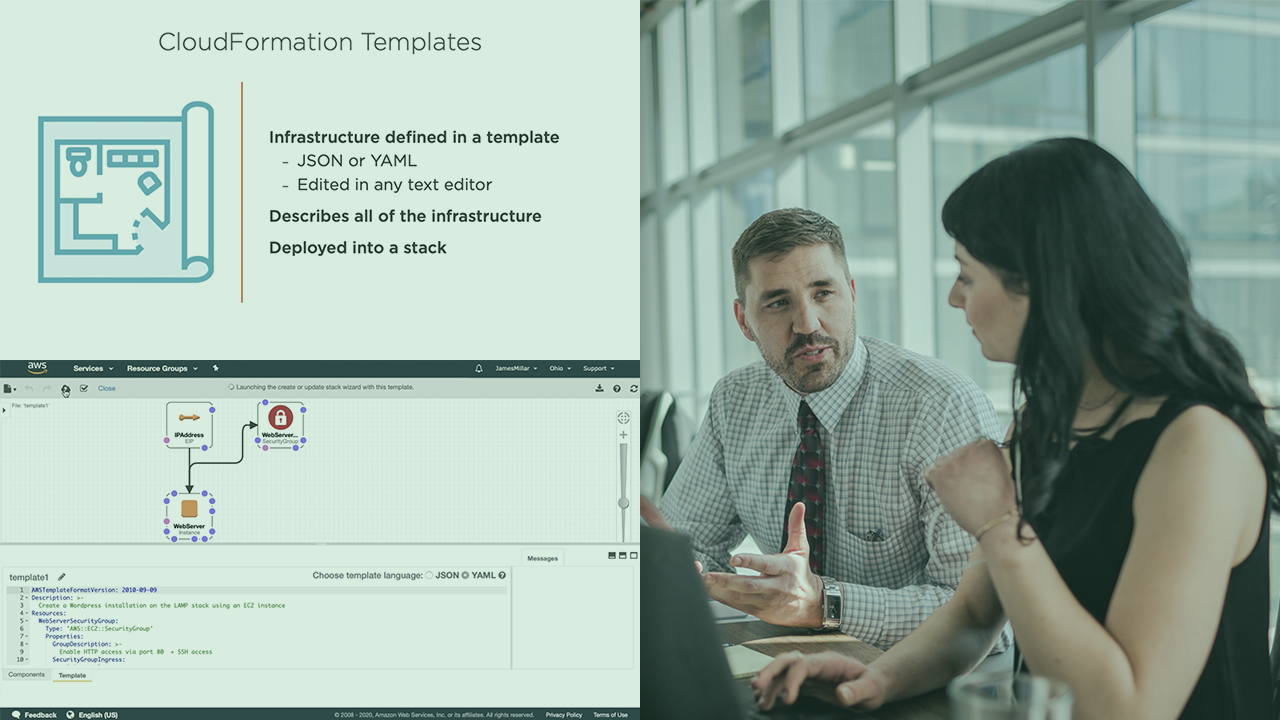- Course
AWS CloudFormation Templates: Getting Started
As your cloud applications grow, maintaining your infrastructure becomes more complicated. AWS CloudFormation offers a way to reduce this complexity. This course will teach you how to describe your infrastructure using AWS CloudFormation templates.

- Course
AWS CloudFormation Templates: Getting Started
As your cloud applications grow, maintaining your infrastructure becomes more complicated. AWS CloudFormation offers a way to reduce this complexity. This course will teach you how to describe your infrastructure using AWS CloudFormation templates.
Get started today
Access this course and other top-rated tech content with one of our business plans.
Try this course for free
Access this course and other top-rated tech content with one of our individual plans.
This course is included in the libraries shown below:
- Cloud
What you'll learn
Codifying your infrastructure allows you to treat it as code, offering you a single source of truth and allowing you to automate the deployment of your infrastructure. In this course, AWS CloudFormation Templates: Getting Started, you’ll learn how to create CloudFormation templates. First, you’ll explore how to create resources. Next, you’ll discover how to use parameters and output. Finally, you’ll learn how to define mappings. When you’re finished with this course, you’ll have the skills and knowledge of CloudFormation templates needed to create templates for your own infrastructure.

